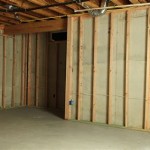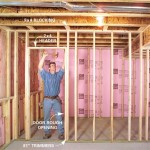How to Effectively Halt Basement Moisture
A damp and humid basement can be a major headache for homeowners. Moisture can cause damage to your belongings, create an unpleasant smell, and even pose a health hazard. Fortunately, there are several steps you can take to stop moisture in your basement and keep it dry and comfortable.
1. Identify the Source of Moisture
The first step to stopping moisture in your basement is to identify the source of the problem. Moisture can enter your basement through a variety of sources, including:
- Cracks in the foundation or walls
- Leaking pipes
- Condensation
- Flooding
Once you have identified the source of the moisture, you can take steps to stop it.
2. Seal Cracks and Leaks
Cracks in your foundation or walls can allow water to seep into your basement. To seal these cracks, you can use a variety of products, such as hydraulic cement, epoxy, or caulk. You can also apply a waterproof coating to the interior walls of your basement.
Leaking pipes are another common source of moisture in basements. To fix a leaking pipe, you can tighten the fittings, replace the pipe, or call a plumber.
3. Control Condensation
Condensation occurs when warm, moist air comes into contact with a cold surface. This can happen in your basement if there is a lot of humidity in the air and the walls are cold. To control condensation, you can:
- Install a dehumidifier to remove moisture from the air
- Ventilate your basement by opening windows and doors
- Insulate the walls of your basement
4. Prevent Flooding
Flooding can be a major source of moisture in basements. To prevent flooding, you can:
- Install a sump pump to remove water from your basement
- Grade the soil around your home so that water flows away from the foundation
- Install a backflow preventer to prevent water from backing up into your basement from the sewer
5. Create a Moisture Barrier
A moisture barrier is a layer of material that helps to keep water out of your basement. You can create a moisture barrier by installing a vapor barrier on the floor and walls of your basement. Vapor barriers are made of plastic or foil and help to prevent moisture from evaporating from the ground and entering your basement.
Additional Tips
In addition to the steps outlined above, there are a few other things you can do to help keep your basement dry:
- Keep your gutters and downspouts clean and free of debris
- Make sure that your sump pump is working properly
- Avoid storing items in your basement that can absorb moisture, such as cardboard boxes and wood
By following these tips, you can effectively stop moisture in your basement and keep it dry and comfortable.

Moisture In Basements Causes And Solutions Umn Extension

6 Causes Of Basement Moisture How To Fix Them

3 Ways To Prevent Humidity In A Basement Wikihow

Moisture In The Basement Don T Let It Linger Evergreen Midcoast Me

What Causes Moisture In Basement Walls Water Damage Advisor

How To Reduce Humidity In A Basement Thermopro Blog

How To Prevent Moisture Problems In The Basement Dki Services

Get Rid Of Humidity In A Basement Without Dehumidifier

8 Ways To Eliminate Basement Moisture Northeast Property Restoration

Moisture In Basements Causes And Solutions Umn Extension








